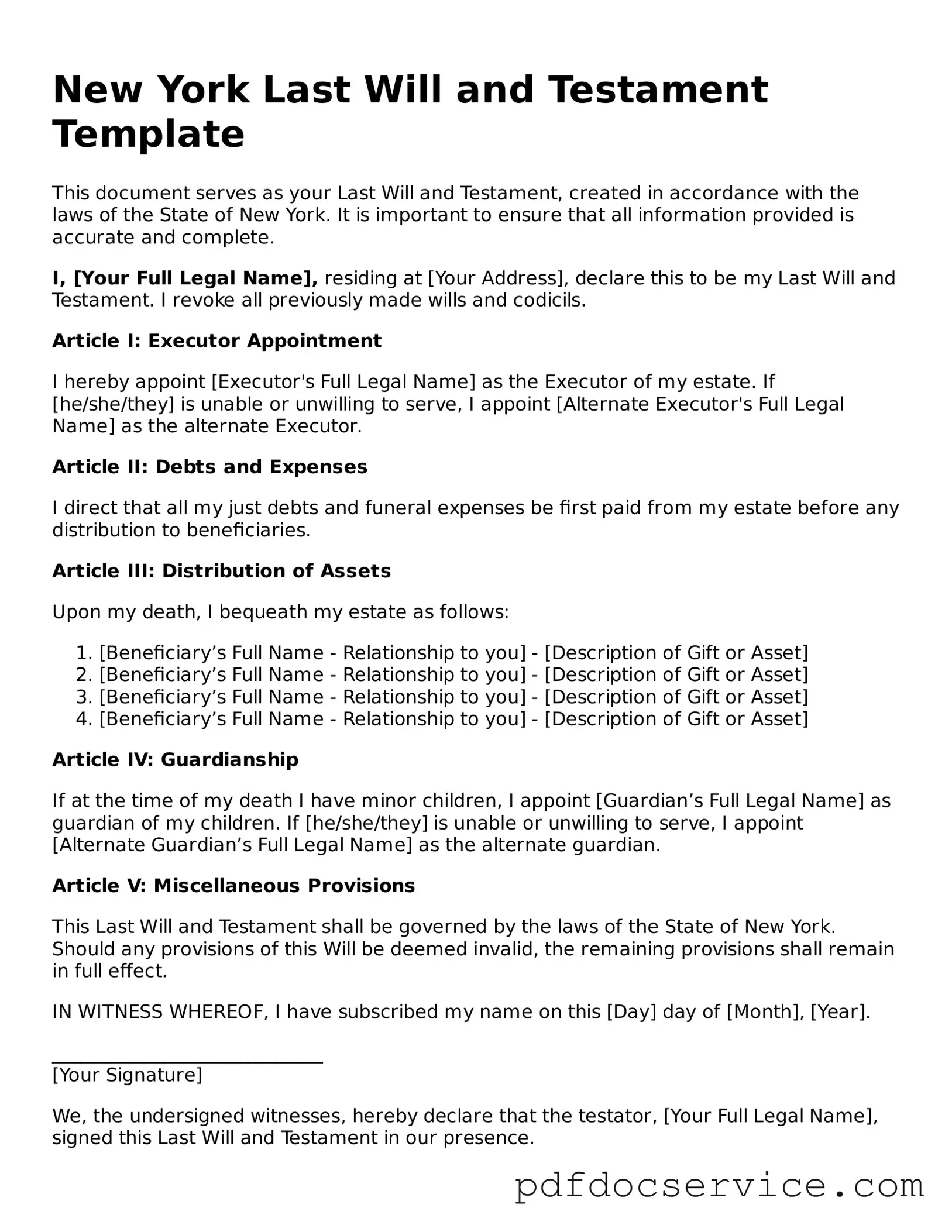Printable Last Will and Testament Template for New York
A New York Last Will and Testament form is a legal document that outlines how an individual's assets and responsibilities will be managed after their passing. This essential form ensures that your wishes are respected and provides clarity to your loved ones during a difficult time. Understanding its components and requirements can help you create a comprehensive and effective will.
Open Last Will and Testament Editor
